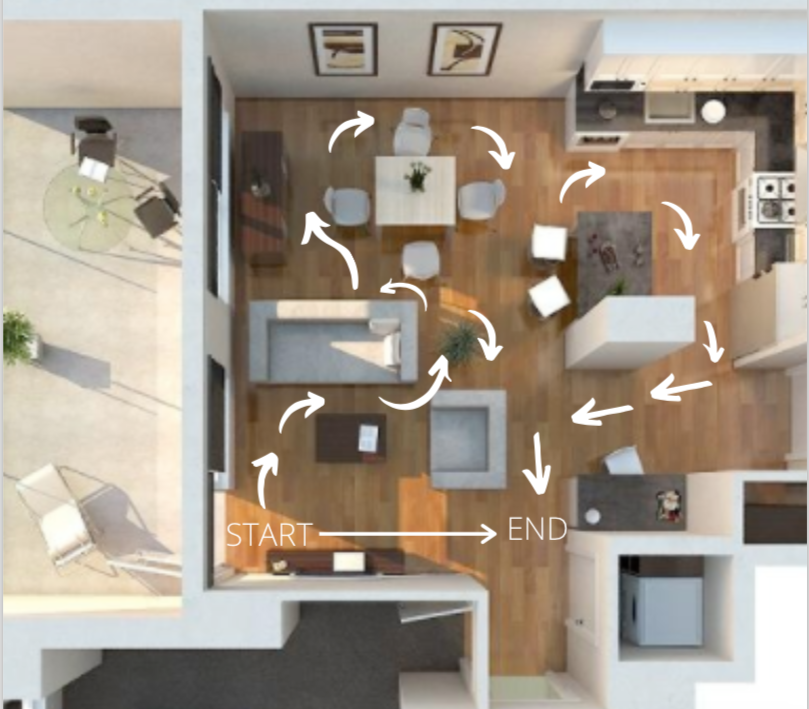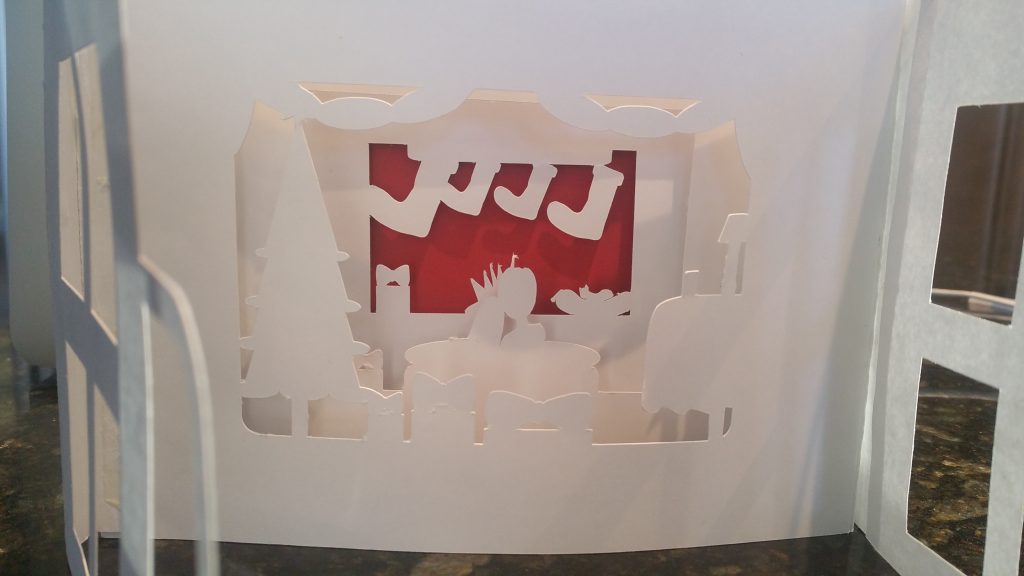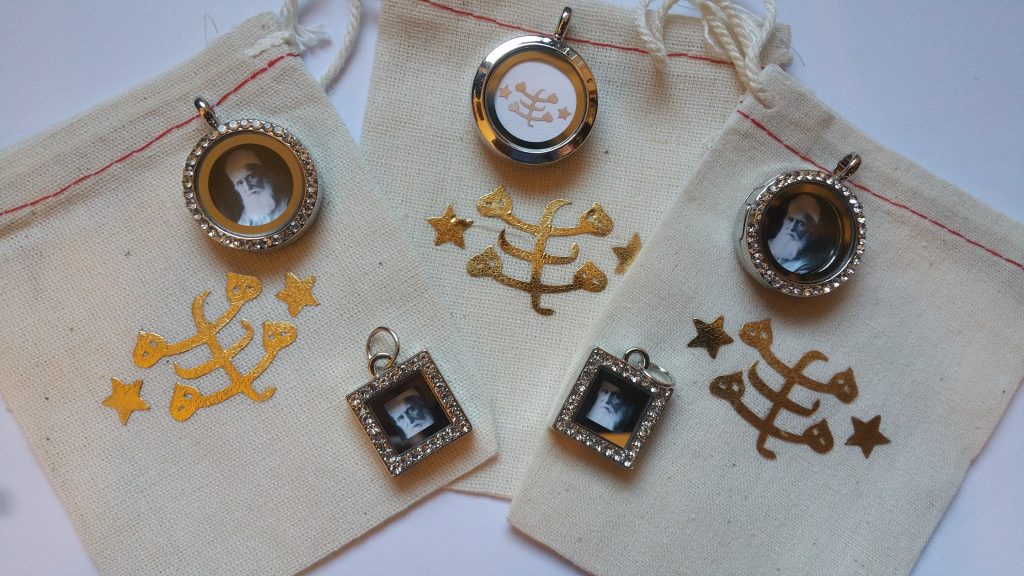
GOD’S MANIFESTATIONS ILLUMINE HUMAN HEARTS WITH THE KNOWLEDGE OF GOD
SET 1
GRADE 3 LESSON 2
WELCOME
Introducing the principal theme
This lesson aims to enhance our understanding that we know God through His Manifestations and that, by listening to and following their words, we do what is pleasing to God.
The Manifestations of God tell us about the Will of God and the purpose of our lives, that we were created to know God and to worship Him, and that we should learn to live according to His Will.
The Manifestations of God know exactly what we need. They are all-knowing and all-wise, for their knowledge comes directly from God, Whose knowledge holds all things. What does it mean that God’s knowledge holds all things? Is there anything whatsoever that can escape God?
The Manifestations of God are the source of His knowledge on earth. What they say is true, and through their teachings, we are able to distinguish between right and wrong. They reflect the beauty of God, which we learn to love and cherish. The more we follow their teachings, the closer we get to God. And we help the world become more beautiful, as He created it to be.
PRAYER
SEND A POSTCARD
MEMORIZATION AID
O Thou Whose face is the object of my adoration, Whose beauty is my sanctuary, Whose habitation is my goal, Whose praise is my hope, Whose providence is my companion, Whose love is the cause of my being, Whose mention is my solace, Whose nearness is my desire, Whose presence is my dearest wish and highest aspiration, I entreat Thee not to withhold from me the things Thou didst ordain for the chosen ones among Thy servants. Supply me, then, with the good of this world and of the next. Thou, truly, art the King of all men. There is no God but Thee, the Ever-Forgiving, the Most Generous.
Bahá’u’lláh
QUOTE
In the following passage, Bahá’u’lláh speaks of the duty of every human being to recognize God’s Manifestation on earth and to follow that which He ordains—this, out of our love for God. Are there any words or phrases you find difficult or unfamiliar?
Say: O ye lovers of the One true God! Strive, that ye may truly recognize and know Him, and observe befittingly His precepts.
Bahá’u’lláh
SONG
STORY
There are so many accounts in the history of the Faith that offer insight into the theme of this lesson, that God’s Manifestations shine forth the light of His knowledge, brightening the world of humanity and illuminating human hearts. For this lesson, there are 4 stories that will enable you to understand what it means that the Báb and Bahá’u’lláh possessed innate knowledge. Read all or just one as time permits.
- STORY 1
- STORY 2
- STORY 3
- STORY 4
The father of the Báb passed away when He was a small child, and He was raised by His uncle, who placed Him in school around the age of five. The Báb, of course, was endowed by God with innate knowledge and did not need to be instructed by any man. But He obeyed His uncle’s wishes and attended school with the other boys. He was told by His uncle, who had already noticed His extraordinary qualities, that, while in class, He should follow the example set by His fellow students.
Now, the schoolmaster was a man of great learning, and he taught the boys how to read and recite verses from the Qur’án, the Holy Book of Islám. One day, he asked the Báb to recite the opening words of the Qur’án. The Báb hesitated. He then replied that, unless He was told what the words meant, He would not attempt to recite them aloud. The schoolmaster pretended not to know their meaning, and so the Báb asked for permission to explain them. He then spoke with such knowledge and clarity that the schoolmaster was struck with amazement. Never before had he heard or read such an eloquent explanation of these words, and he immediately recognized the great capacity of the Báb and realized there was nothing that he could teach Him. He decided to take the Báb back to His uncle and tell him that he was unworthy to instruct so remarkable a child. He found the uncle alone in his office and said: “I have brought Him back to you and commit Him to your vigilant protection. He is not to be treated as a mere child . . .” The uncle turned to the Báb and said: “Have You forgotten my instructions? Have I not already admonished You to follow the example of Your fellow pupils, to observe silence, and to listen attentively to every word spoken by Your teacher?” Promising to follow His uncle’s wishes, the Báb returned to school. But do you think anything could stop the flow of His intuitive knowledge? Surely not, and day after day, His teacher was amazed by the signs of wisdom and greatness that were manifest in Him.
There are many stories from the time of Bahá’u’lláh that demonstrate how people were attracted to His knowledge and awed by it. One such story is about the visit Bahá’u’lláh made to Núr, the district of His birth in Mázindarán in Persia, soon after He accepted the truth of the Báb’s Revelation.
The enthusiasm with which the people of Mázindarán greeted Bahá’u’lláh was indeed extraordinary. They were spellbound by the eloquence of His speech. The arguments and proofs He set forth, as He announced the dawning of a new Day, convinced them of the greatness of the Cause of the Báb. They admired His enthusiasm and were deeply impressed by His detachment and self-effacement. No one dared oppose Him except His own uncle ‘Azíz, who became jealous of the love and respect Bahá’u’lláh was receiving from the people.
Alarmed by Bahá’u’lláh’s success, ‘Azíz decided to seek the assistance of a well-known clergyman in the region, presumably the possessor of great knowledge. “Behold what has befallen the Faith,” exclaimed ‘Azíz. “A youth, a layman, attired in the garb of nobility, has come to Núr, has invaded the strongholds of orthodoxy, and disrupted the holy Faith of Islám. Arise, and resist his onslaught.” The clergyman did not find in himself the strength to confront Bahá’u’lláh, so he did his best to quiet ‘Azíz, assured him that he would be protected, and dismissed him. But the Message Bahá’u’lláh had brought to the region was rapidly spreading, and the clergyman’s students kept pressuring him to visit Bahá’u’lláh in person and find out for himself the nature of this new Revelation. Finally, after much delay, he decided to send two of the most learned and trusted individuals in his company to visit Bahá’u’lláh and determine the true character of the Message He had brought. He promised to everyone that he would accept the judgment of these two trusted souls and would abide by their decisions.
When these two emissaries reached the presence of Bahá’u’lláh, He was in a gathering, engaged in revealing a commentary on one of the chapters of the Qur’án. With great self-assurance, they entered the meeting and sat down, prepared to ask questions and examine the extent of Bahá’u’lláh’s knowledge. But as they listened to the voice of Bahá’u’lláh, they were enraptured by the eloquence of His speech and the profound meaning of His statements. Mullá ‘Abbás, one of these two emissaries, was entirely overwhelmed. He arose from his seat, walked back slowly, and stood beside the door in an attitude of utter submissiveness. “You behold my condition,” he told his friend as he trembled with emotion and with eyes full of tears. “I am powerless to question Bahá’u’lláh. The questions I had planned to ask Him have vanished suddenly from my memory. You are free either to proceed with your inquiry or to return alone to our teacher and inform him of the state in which I find myself. Tell him from me that ‘Abbás can never again return to him. He can no longer forsake this threshold.” His companion found himself in a similar state. “I have ceased to recognize my teacher,” he replied.
“This very moment, I have vowed to God to dedicate the remaining days of my life to the service of Bahá’u’lláh, my true and only Master.”
So the two emissaries of the famous clergyman never went back to their teacher. The news of their conversion traveled fast. It awakened the people from their sleep. People of all walks of life journeyed to Núr in order to enter the presence of Bahá’u’lláh and partake of His Divine knowledge. A considerable number of them accepted the new Faith of God. But as you know, this and the many other early successes of the Cause aroused the envy of those who took advantage of the people’s ignorance in order to rule over them. Soon a tremendous wave of persecution arose throughout the entire country, bringing unimaginable suffering to both the Báb and Bahá’u’lláh.
Shaykh Ḥasan was a devoted follower of the Báb, who, for many years, lived in the city of Karbilá. The Báb had instructed Shaykh Ḥasan to go to Karbilá and remain in that city, for there he would see with his own eyes “the beauteous countenance of the promised Ḥusayn”. “Countenance” means “face”, and by “the promised Ḥusayn” the Báb meant Bahá’u’lláh. At that time Bahá’u’lláh had not yet declared that He was the Promised One of All Ages, so His station was not known to people. The Báb, Who Himself was a Manifestation of God, of course, knew this hidden truth.
Thus Shaykh Ḥasan made his home in Karbilá. Days, weeks, and months went by, and he did not meet the Promised One; yet, he did not lose heart. He was certain that the day would come when he would enter into His presence. Shaykh Ḥasan lived a simple life. He worked as a scribe, and although the pay was not good and he was not without hardship, he was content. He was careful not to talk too much about the Báb because there were many enemies of the Faith in Karbilá at that time who were ready to create trouble for the Bábís whenever they could. More important still, he spoke to no one about the Báb’s special promise to him.
Then the day arrived when the eyes of Shaykh Ḥasan fell upon the countenance of Bahá’u’lláh. It was the fall of 1851, and Bahá’u’lláh had traveled to Karbilá. Bahá’u’lláh’s majesty, His kindliness, and the sweetness of His smile, all had a profound effect on Shaykh Ḥasan’s soul. He was an old man by then, bowed with age. Bahá’u’lláh lovingly took him by the hand and said in a humorous tone: “This very day I have purposed to make you known as a Bábí throughout Karbilá.” Still holding his hand in His, He continued to converse with him. He walked with him along the market street and showered love and affection upon him. Shaykh Ḥasan was beside himself. His heart was full of joy but he did not understand why he felt such happiness. Then, in a voice that was at once powerful and loving, Bahá’u’lláh told him: “Praise be to God that you have remained in Karbilá, and have beheld with your own eyes the countenance of the promised Ḥusayn.”
Shaykh Ḥasan instantly knew that the Báb’s promise had been fulfilled. He was indeed gazing on the countenance of the promised Ḥusayn. His faithful years of patience had been rewarded with the greatest of gifts: to have recognized the Manifestation of God for today.
God watches over us, and we live under the protection of His Manifestation, Whose knowledge is bestowed on Him by God. There once was an Egyptian merchant by the name of ‘Abdu’l-Karím who was on fire with the love of God and had a burning desire to enter the presence of Bahá’u’lláh. So he wrote for permission to visit the Holy Land. Bahá’u’lláh answered that he could come on pilgrimage, but only after he had paid all his debts.
Now, ‘Abdu’l-Karím had a very large business and also many, many debts. When he received Bahá’u’lláh’s answer, he instantly obeyed and began to pay the money he owed to his creditors. But, to his surprise, this did not turn out to be so easy. He had to stop expanding his business. Each time he received some money, he paid a debt instead of buying new merchandise to sell. So business shrank and shrank until finally, after five years, when all his debts were paid, ‘Abdu’l-Karím was no longer a rich man. In fact he only had enough money to provide for his wife’s needs and buy a ticket on a boat to the Holy Land. And he did not travel in the comfort to which he had grown accustomed as a wealthy merchant; he remained on deck and could hardly keep himself warm from the chill of the wind.
The day ‘Abdu’l-Karím’s boat was to arrive in Haifa, Bahá’u’lláh told His family that He was expecting an honored guest. A carriage was sent to the port to pick up the respected merchant and drive him to ‘Akká. But the man who went looking for ‘Abdu’l-Karím was expecting a wealthy guest and did not recognize the poorly dressed man who came off the boat carrying only a few possessions. So he went back and reported that the guest had not arrived.
Try to imagine ‘Abdu’l-Karím’s disappointment when he saw that there was no one at the port to receive him. He had no addresses in Haifa and did not even have enough money to take a carriage to ‘Akká. He sat on a bench drowned in sorrow. Unwanted thoughts kept creeping into his head: Had Bahá’u’lláh actually forgotten him? Had he freed himself of every obligation so that he could enter the presence of his Lord only to find himself in a strange land with no one to turn to? Oh, how happy he had been while he was preparing himself for pilgrimage. Was this to be the end to all those years of preparation?
In spite of the report He had received, Bahá’u’lláh of course knew that His guest had arrived. So, this time He asked ‘Abdu’l-Bahá to go to Haifa and bring the respected merchant to His presence. When ‘Abdu’l-Bahá arrived at the port, He immediately recognized that the honored guest was none other than the lonely man sitting on the bench lost in sadness. He approached him, greeted him with love and affection, and explained to him what had happened. It was now late and night was falling. He asked ‘Abdu’l-Karím if he desired to go to ‘Akká that very night or wait until morning. With all the bitter thoughts that had passed through his mind, ‘Abdu’l-Karím no longer felt ready to enter the presence of Bahá’u’lláh. He wanted to spend the night in prayer and meditation to prepare himself for the great bounty that awaited him. ‘Abdu’l-Bahá, of course, understood this. He sat on the bench by ‘Abdu’l-Karím, opened the long cloak He was wearing, and wrapped it around him so they would both have some protection from the cold. All throughout that night, ‘Abdu’l-Bahá and ‘Abdu’l-Karím prayed and let their souls be filled with the joy of the Kingdom. Then in the morning ‘Abdu’l-Karím, freed and purified, appeared before Bahá’u’lláh and received a plentiful share of Divine love and bounty.
COOPERATIVE GAMES
Just or Not Just
Make little signs that say “just” and “not just” on either side. You can tell the children a story, or just give them scenarios – and they have to hold up their sign and tell if it’s “just!” or “not just”.
The children can give their own examples. E.g.: – (J) Sharing crayons with others
– (J) Following the rules when playing a game.
– Taking away someone’s toy without asking to use it.
– (J) Making sure everyone gets a slice of cake.
– Cutting in front of others in line without permission.
– (J) Taking equal turns on the swing.
– (J) Finding a game everyone can enjoy.
– Taking someone’s candy if they were mean to you.
The “Sharing” game
One good way to do this activity is to have a sheet that all of the children stand on. Fold the sheet in half for the second attempt. And keep folding the sheet in half, and see how small you can get it with everyone still being able to fit on it.
OBSTACLE COURSE
The goal is to show that the straight path is the better path to take.
Create an obstacle course but as a path going in circles all over the place. The aim is for the children to get from point A to point B. Make it as convoluted as your space allows. Make a second path with no obstacles, make it straight from point A to point B. Let the children see who can get to the end of their path first.
Below is an example of an obstacle course.

NARRATION
CHOOSE ONE OF THE STORIES AND ACT IT OUT.
REMEMBER THAT NO ONE PORTRAYS THE MESSENGER OF GOD.
CRAFTS
1. Sun Catcher
MAKE A SUN CATCHER AND ADD THE LABEL “GOD’S MANIFESTATIONS ILLUMINE HUMAN HEARTS WITH THE KNOWLEDGE OF GOD”
Stick washi tape or tissue paper on one heart and then glue the second heart on top of the first.

2. MAKE A HEART LIGHT-UP CARD
3. Jar With Lights
Use a jar with an outline of a heart taped on it. The label “God’s manifestations illumine human hearts with the knowledge of God” can be used
4. A Simple Gluing Activity
Paste the quote onto a heart
5. Lantern Radiant Heart
Objective: To create lanterns that symbolize the illumination of human hearts with the knowledge of God, inspired by the concept of God’s Manifestations.
Materials:
- Colored construction paper or cardstock
- Child-safe scissors
- Glue or tape
- Markers or colored pencils
- Transparent or translucent plastic sheets (or recycled clear plastic containers)
- Battery-operated tea lights or LED candles
- String or yarn
- Hole punch
- Stickers, glitter, or embellishments (optional)
Procedure:
During the display, revisit the concept of God’s Manifestations and how they bring light and knowledge to human hearts.
Begin by discussing the concept of God’s Manifestations and how they illuminate human hearts with the knowledge of God.
Cut out heart shapes from colored construction paper or cardstock. These will be the main elements of the lanterns.
Decorate the heart shapes with markers, colored pencils, stickers, glitter, or other embellishments. Encourage the children to use bright colors and symbols that represent knowledge and enlightenment.
Cut out smaller heart shapes from transparent or translucent plastic sheets. These will be the windows of the lanterns.
Glue or tape the smaller plastic hearts onto the larger decorated hearts, leaving space in the center for the light to shine through.
If using recycled clear plastic containers, cut them into heart shapes, leaving an opening in the center for the light.
Glue or tape the edges of the plastic hearts or containers to the decorated hearts.
Optionally, punch a hole near the top of each lantern and thread string or yarn through it to create a hanging loop.
Place battery-operated tea lights or LED candles inside the lanterns. Make sure the lights are secure and won’t fall over.
Discuss the completed Radiant Heart Lanterns with the children, emphasizing how the illuminated hearts symbolize the knowledge of God brought by His Manifestations.
Display the lanterns in a communal area or hang them around the room, creating a warm and symbolic atmosphere.
6. Book of Knowledge Collage
Objective: To create a visual representation of the Báb’s innate knowledge and wisdom through a craft that emphasizes the power of words
Materials:
- Large poster board or cardboard
- Old books, magazines, or printed materials
- Child-safe scissors
- Glue or glue sticks
- Markers or colored pencils
- Printouts of the opening words of the Qur’án (with English translations)
- Optional: Decorative elements like stickers, glitter, or embellishments
Procedure:
- Begin by discussing the story of the Báb’s early education with the children, focusing on His innate knowledge and wisdom.
- Provide each child with a large poster board or cardboard as the base for their “Book of Knowledge Collage.”
- Instruct the children to cut out words, phrases, and images from old books, magazines, or printed materials that represent knowledge, wisdom, and education. Encourage them to find diverse content related to learning.
- Integrate printouts of the Qur’án verses with English translations into the collage. Discuss the significance of these verses in the story.
- Encourage the children to arrange and glue the cut-out elements onto their poster boards in a way that creates a visually appealing and meaningful collage.
- Use markers or colored pencils to draw additional elements or highlight specific parts of the collage.
- Optionally, add decorative elements like stickers, glitter, or embellishments to enhance the overall design.
- Discuss the completed “Book of Knowledge Collage” as a group, encouraging the children to share the elements they chose and why they represent knowledge and wisdom.
- Display the collages in a communal area, creating a gallery that showcases the children’s understanding of the story and the theme of innate knowledge.
- During the display, revisit the story and discuss how the Báb’s wisdom and knowledge were recognized by His teacher despite the initial instructions.
This craft not only engages children in a creative activity but also allows them to express their understanding of the concept of innate knowledge while reflecting on the story of the Báb’s early education.
LAPBOOK
COMING SOON
REVIEW QUOTE
O Son of Man! Neglect not My commandments if thou lovest My beauty, and forget not My counsels if thou wouldst attain My good pleasure.
Bahá’u’lláh
RESOURCE
BRILLIANT STAR MAGAZINE
RESOURCES FOR STORIES


